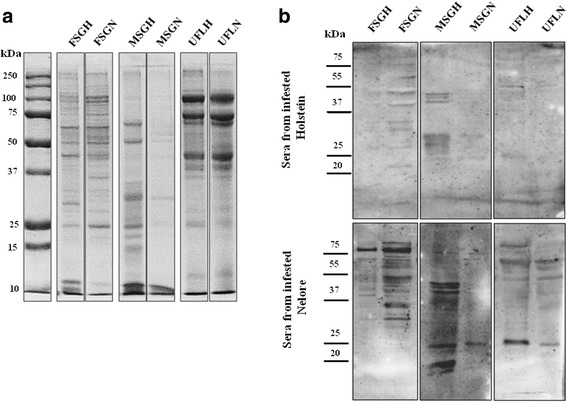Fig. 4.

Sera from twice-infested, genetically tick-resistant breeds of bovines react with more tick salivary proteins than sera from genetically tick-susceptible bovines. a Protein extracts of FSG, MSG and UFL (7 μg of each) from ticks fed on resistant (R) and susceptible (H) hosts were separated in 12% SDS-PAGE gels and then stained with Coomassie blue. Molecular weight markers (kDa) are indicated on the left of the gel. b Sera were reacted in protein blots of extracts of FSG, MSG and UFL of R. microplus separated by electrophoresis in one dimension. Sera were pooled from twice-infested, tick-susceptible (Holstein breed) or tick-resistant (Nelore breed) bovines (N = 4 of each) when infested with larvae, nymphs and adults, totaling 12 sera in each pool) and reacted with proteins from the indicated extracts. The end dilution used was 1:75. Abbreviations: FSGH, extract of salivary glands from female ticks fed on Holsteins; FSGN, extract of salivary glands from female ticks fed on Nelores; MSGH, extract of salivary glands from male ticks fed on Holsteins; MSGN, extract of salivary glands from male ticks fed on Nelores; UFLH, extract of larvae hatched from egg masses laid by female ticks fed on Holsteins; UFLN, extract of larvae hatched from egg masses laid by female ticks fed on Nelores
